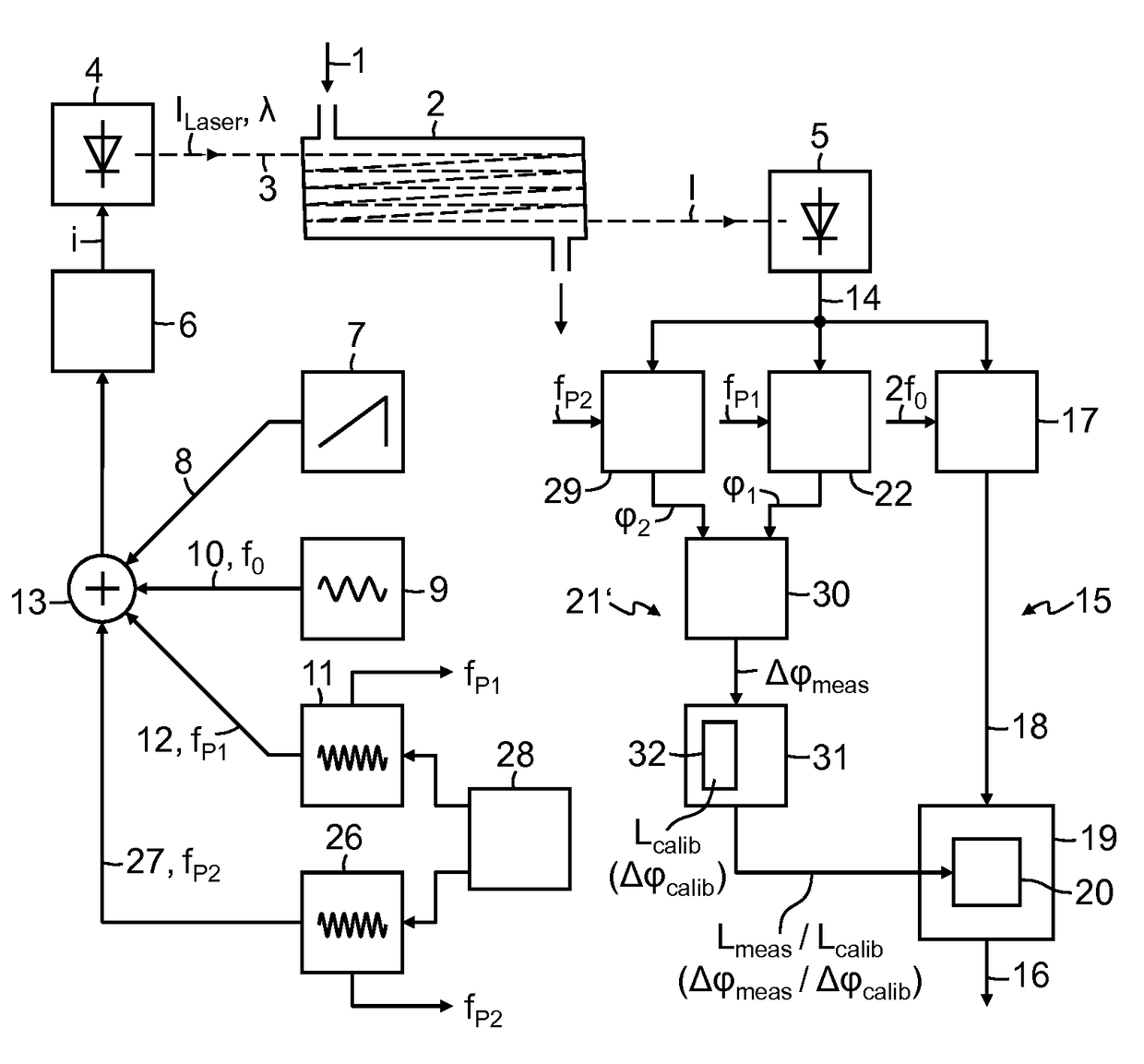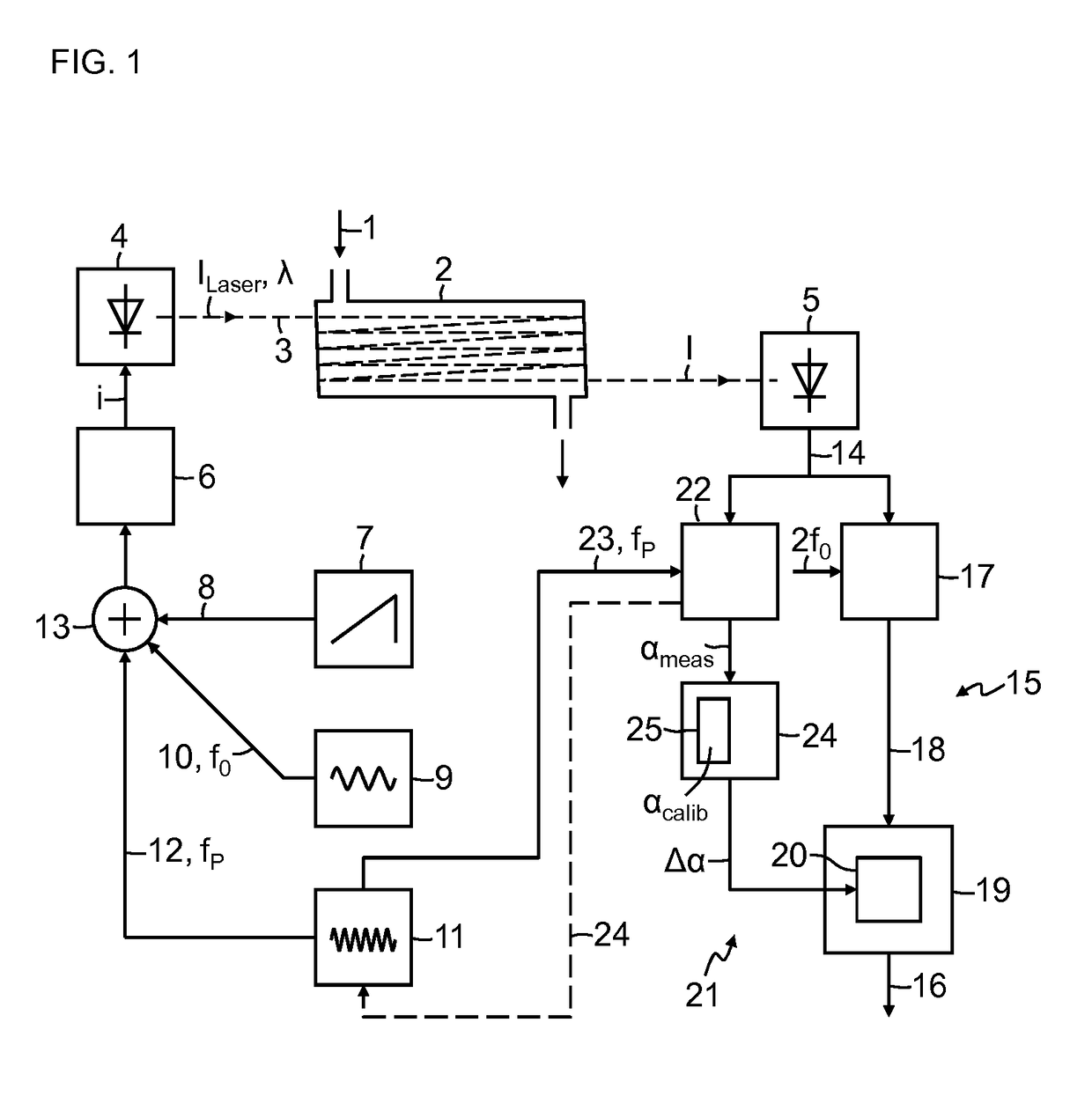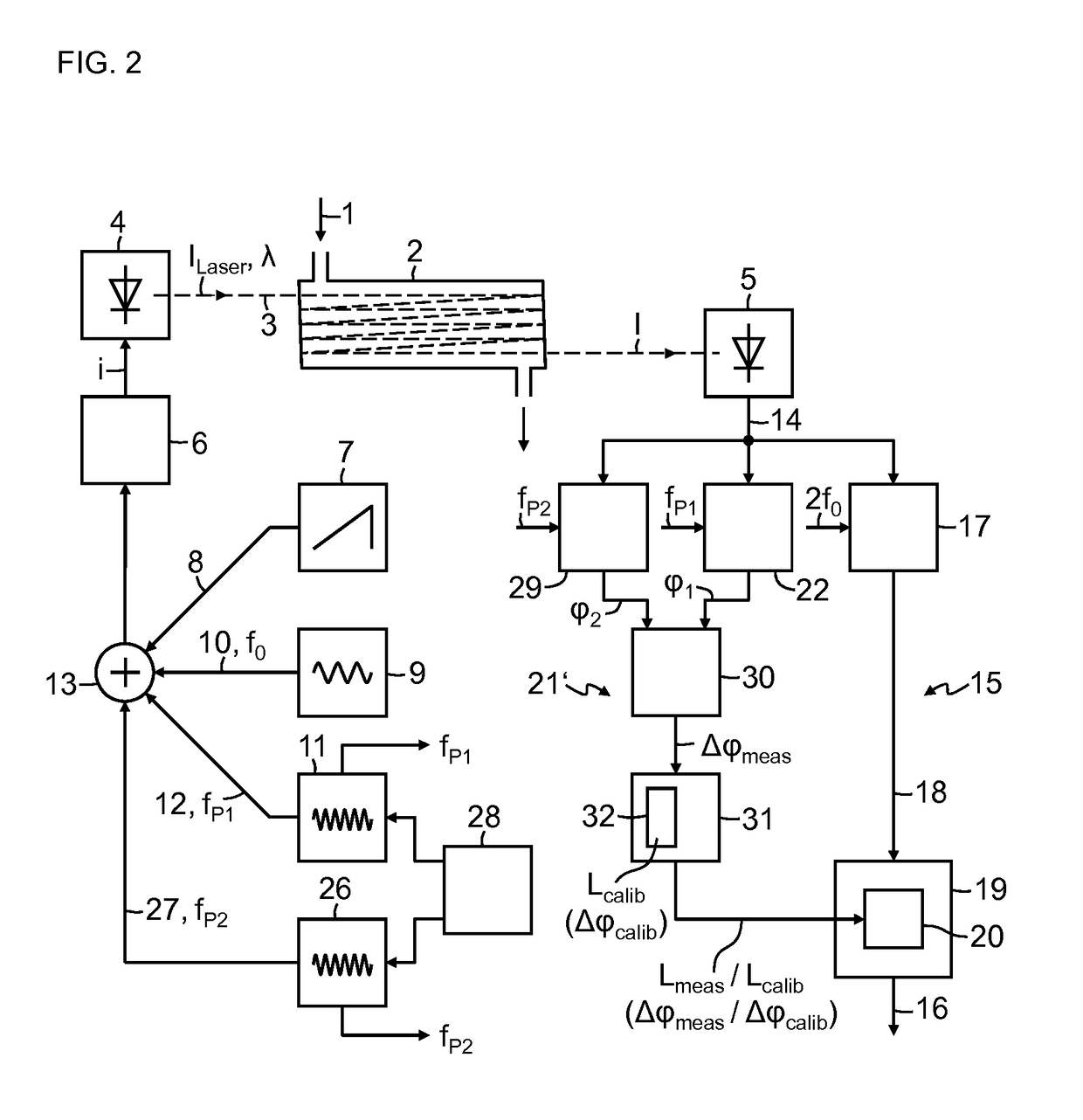Absorption spectrometer and method for measuring the concentration of a gaseous component of interest in a measurement gas
a technology of gaseous components and absorption spectrometers, which is applied in the direction of optical radiation measurement, instruments, spectrometry/spectrophotometry/monochromators, etc., can solve the problems of increasing measurement errors, increasing accuracy, and increasing measurement errors, and achieves high angular resolution
- Summary
- Abstract
- Description
- Claims
- Application Information
AI Technical Summary
Benefits of technology
Problems solved by technology
Method used
Image
Examples
Embodiment Construction
[0031]In the form of a simplified block diagram, FIG. 1 shows an absorption spectrometer operating based on wavelength-modulation spectroscopy (WMS) for measuring the concentration of at least one gaseous component of interest in a measurement gas 1, which is routed through a multi-reflection gas cell 2. The multi-reflection gas cell 2 is arranged in the light path 3 between a laser 4, in this case a laser diode, and a detector 5. The light coming from the laser 4 is reflected multiple times in the multi-reflection gas cell 2 prior to falling on to the detector 5. The multi-reflection gas cell 2 comprises, for example, a Herriott cell or White cell, so that its actual construction can differ considerably from the strongly schematic representation in this case. The laser diode 4 is activated by a controllable current source 6 with an injection current i, with the intensity ILaser and wavelength λ of the light generated being dependent on the current i and the operating temperature of...
PUM
| Property | Measurement | Unit |
|---|---|---|
| absorption distance | aaaaa | aaaaa |
| geometric length | aaaaa | aaaaa |
| absorption distance | aaaaa | aaaaa |
Abstract
Description
Claims
Application Information
 Login to View More
Login to View More - R&D
- Intellectual Property
- Life Sciences
- Materials
- Tech Scout
- Unparalleled Data Quality
- Higher Quality Content
- 60% Fewer Hallucinations
Browse by: Latest US Patents, China's latest patents, Technical Efficacy Thesaurus, Application Domain, Technology Topic, Popular Technical Reports.
© 2025 PatSnap. All rights reserved.Legal|Privacy policy|Modern Slavery Act Transparency Statement|Sitemap|About US| Contact US: help@patsnap.com



